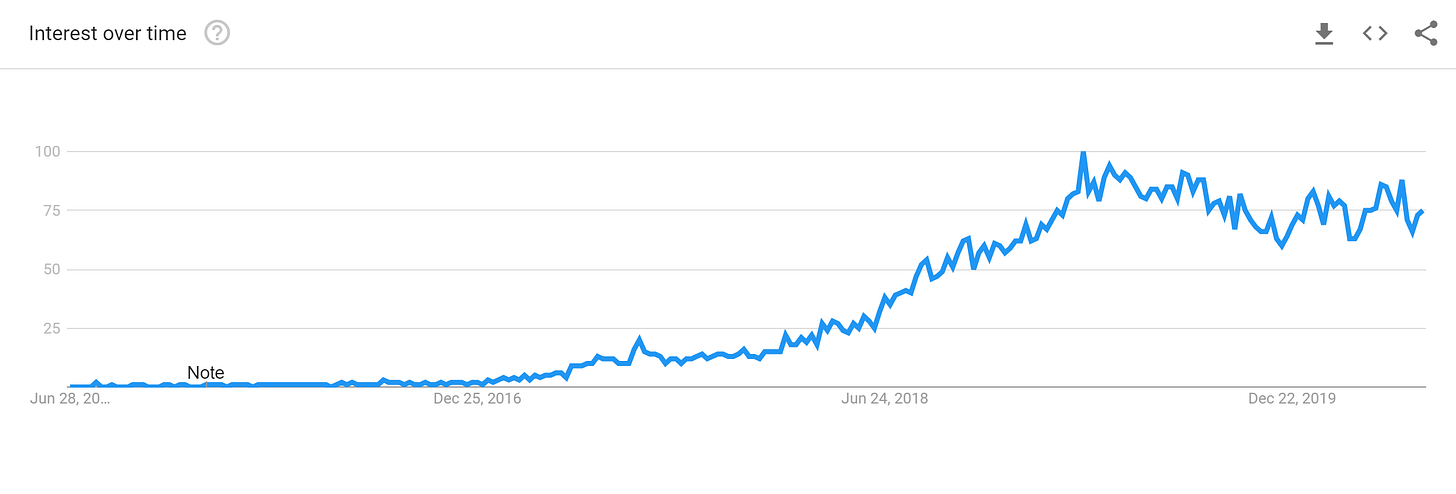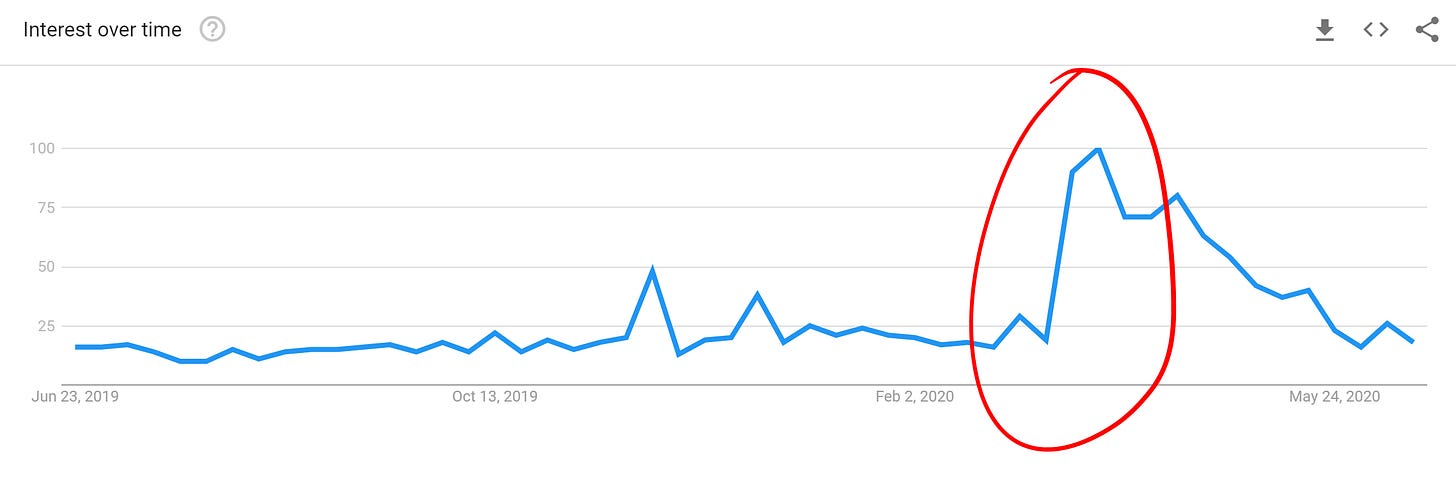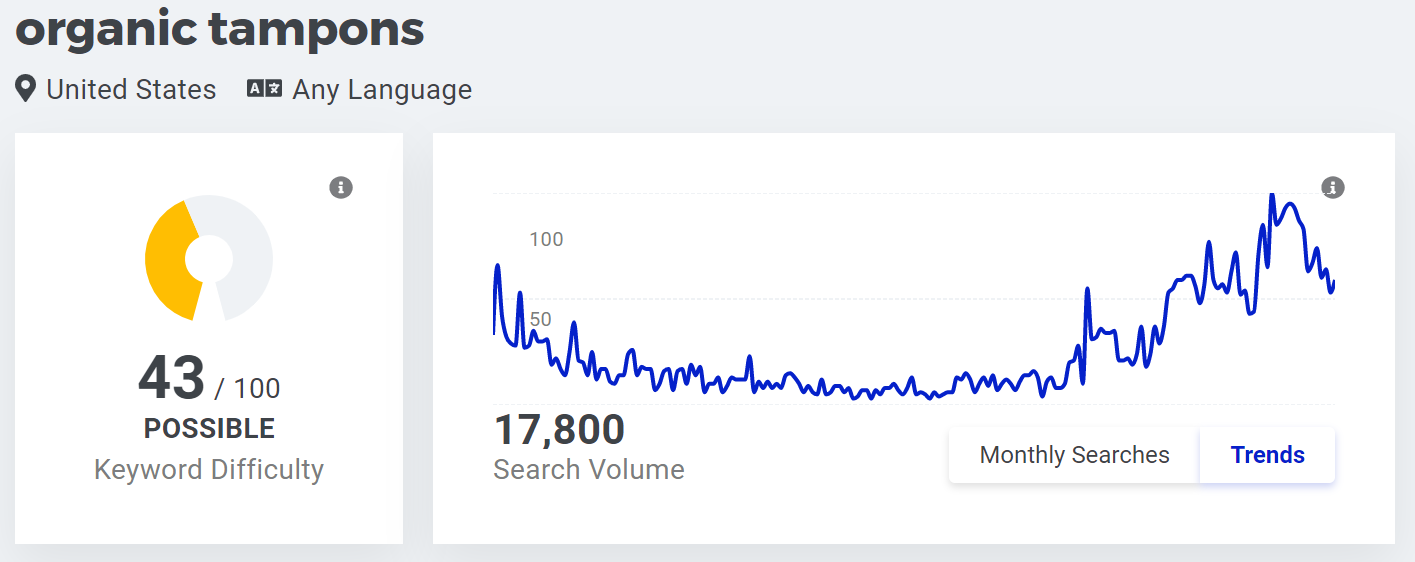⚡ Signal SE - The eCommerce Edition
The do-it-right-now guide to getting an eCommerce business off the ground.
Hello Everyone!
Welcome back to an out of the blue Signal Special Edition.
Every now and then I take a break from the usual programming to keep things fresh. (It’s normally once a month, but occasionally more frequently). Normally, we break down a business idea that I’m particularly excited about and unpack it in-depth.
Here’s the latest one on Home Offices. Still think that could be a goodie.
Today, we’re going for something a little different.
This is the ‘start-it-right-now-and-learn-more-as-you-go’ guide to eCommerce.
A lot of people have asked for this. The issue with the resources online is that there are SO many. It’s hard to know where to start.
If you follow along, you’ll be up and ready to sell something online by the end of this edition. It’s packed with short, sharp info snippets.
If you get to the end and I’ve whetted your appetite, let me know and I’ll maybe go more in-depth into it.
Without any further rambling, let’s get started.
(Oh, PS: I’m trying out Substack temporarily, so some things might look a bit different. Let me know if you have a preference.)
⚙️ Getting Started
For the duration of this guide, it is assumed we will be choosing a product that you want to manufacture (even if it’s only down the line), and sell yourself.
There is a fundamental difference in eCommerce business when compared to traditional retail business. The whole transaction happens online, without the customer or business owner interacting (IRL).
Cost Structure
For your average D2C brand, here is your typical cost structure (including significant ones):
Fixed Costs
Website hosting
Domain renewal
Email marketing
Variable Costs
Product cost of sales
Packaging
Shipping
Advertising (I’ll explain why this is a variable cost later)
Processing fee’s
eCommerce per-unit costs are higher (shipping + packaging), but their fixed costs are lower (much less rent and employee salaries).
Wholesale vs Dropshipping
One of the latest trends in eCom is drop-shipping. If you’ve ever ordered something online and it says delivery in 7 to 10 working days - it’s likely that it’s being drop-shipped.
As the store owner, all you’re doing is facilitating the transaction. You build a brand, people buy from you, when they buy, you place an order with the manufacturer/wholesaler and they ship directly to the customer. You don’t ever see/touch the product.
We’re not going to be focusing on this model for now. We’re looking at starting your own eCom business and brand.
Wholesale is the process where you do one of three things:
You buy in bulk from a wholesaler and sell for a higher price to customers, or
You find a manufacturer and pay them to make the product from you, or
You make the product yourself.
Subscriptions
One of the most lucrative ways to keep your online store valuable is to use a subscription model. That is when they get charged a recurring fee (weekly, monthly, quarterly etc.) and you send them a product on that same schedule.
Subscription models are powerful because they unlock recurring revenue. That means your average customer lifetime value is much higher, and your cost of advertising and marketing is lower.
🎁 Find Something to Sell
// This section is interlinked with the Product section below. Before deciding on what you want, read that first.
Finding things to sell is easy. Thanks to the internet, it’s easier than ever to spot trends and jump on them.
Here are 3 ways you can do that:
#1 Copy
Have you ever been scrolling through Instagram or Facebook and noticed a product being advertised over and over? It likely means there’s a market for it, and you’re in the target market.
There’s absolutely nothing wrong with copying. As long as you’re not infringing on any trademarks or patents, you’re just taking advantage of a free market. Here’s the catch: taking on an already established brand might be difficult. Here’s how you can do it better:
Copying a product is easy if you can find a way to differentiate your product from the competitors you’re copying.
Want to sell hammocks? Make them ultra-portable, or made for over-nighting.
Selling t-shirts? Offer an ultra-tailored option. Make them customizable.
Selling men’s health products? Make them super easy: Take this packet on Monday, this packet on Tuesday. Print “Monday” and “Tuesday” on the packaging.
Set yourself apart from the competition. Own your differences.
Whatever you do, don’t try and compete only on price. It’s a battle you’ll lose. Someone can always make something cheaper. Have more than one value proposition.
#2 What’s Trending
Take a look around you and look what people are buying.
What products are people moving away from/towards? (Organic vs regular)
What new things are people doing? (Hiking)
What are products trending on Amazon, Etsy, eBay and other sites?
My favourite tool for finding and spotting growing trends is Google Trends.
Here’s the graph for “CBD gummies” in the US. An interesting growth pattern over the past 5 years.

And here’s the sharp upward trend we took advantage of in one of our very first Signal Special Editions (Home made bread):

#3 Offline Disruption
In the days of brick-and-mortar stores being the only way to sell, there was demand for shelf-space. That means a lot of products got left off the shelves of big retailers.
That’s where eCom can fill a void.
There’s no shelf-space on a website. You can fill it with anything you want.
Look for industries in your country that are ripe to be disrupted using the eCom model. Casper did this for the bed industry. They changed what was a “terrible consumer experience” (buying a bed in store) into a simple and easy one - buying it online, and getting fast and free shipping and returns.
For an efficient store (i.e minimum amount of returns/exchanges), find products that don’t require any elements of brick and mortar. Example: People like trying on clothes in stores = lots of returns for eCom. People don’t test out tooth brushes = good for eCom.
Here’s one I’d look at: Women’s hygiene products. (I’d need a woman co-founder and/or advisor though).
Once you have found something to sell, the next step is validating that people will buy it.
✔️ Customer Validation
Before looking at how to get the thing made that you want to, you need to make sure people actually want it. Here are 3 ways you can do that:
#1 Check Search Volumes
Google keyword planner or a tool like Mangools (I use this), SEMrush or Ahrefs can help you here. They all give you search volume estimates for specific terms.
That’ll give you a good indication of your total addressable market.
When you’re doing this, search for intent-specific queries. If you’re selling beds, it’s not enough to type in the search term “beds” and think that’s your total addressable market.
Take some time to outline key phrases that people with buying intent would search like “most comfortable mattresses” and look at the combined search volume for those terms.
Example, here’s some Mangools search volume data for “Organic tampons”. Promising!

#2 Existing Products
Some competitors is good. No competitors is terrible. It likely means there’s something wrong with the model.
There should already be people selling products in that niche, even if the products are different from yours. If there are none, you should be hearing alarm bells.
Google Ads are a good indicator. If people are buying advertising, it means there’s a market.
Check out the average cost-per-click (CPC) for organic tampons.

#3 Go to Your Potential Customers
One of the most under-rated and under-utilized methods of validating.
Message boards/community forums like Quora and Reddit have made it possible to speak directly to a segmented piece of your target market with almost no effort.
By engaging with a community or reading the thread history, you can get a good feeling for the overall buying sentiment/market movement.
Find out where your customers hang out (online or in the real world) and go to them. Talk to them. Seriously.
🏭 Product
Finding a manufacturer can be tricky, depending on what you are wanting to sell.
Your choice in section 1 here will play a big part in the difficulty of your task. My advice is this: For your first eCom business, don’t try and be revolutionary. Pick an easy product and learn about the system. Once you’ve got that, you can venture into more exciting things.
Here is my experience with product design/manufacturing:
DIY
This is the best prize. If you can come up with a prototype/MVP by yourself then do it. Being able to take something to a manufacturer and say “I want you to make this” saves months of development time and costs.
Picking a product within your realm of skills goes a long way here. With YouTube and the internet, you’ll surprise yourself with how much you can achieve from home. Don’t be afraid to muck in. I learnt first hand how to sew when designing our clothing prototypes. That meant I was able to properly explain to the manufacturers errors and/or changes.
Getting your hands dirty is highly recommended.
If you can’t then the next best is finding a local company to help you.
Start Local
Most people’s first intuition is to look to China. It’s the cheapest - in the long run.
However, my experience (especially with more technical products) is to start as close to home as possible.
During the design/prototype phase (if you’re coming up with a relatively new/novel product) you will go through plenty of back and forth. By bringing that process closer to home you’re doing three things:
Speeding it up. No long international transit times.
Making it cheaper. No import/export costs and language barrier to overcome.
Making a better product. You can be hands on, and make changes on the go. That’s not true for China. Eventually you will get fed up and settle for something that’s not quite what you imagined so you can get a product out the door.
Local manufacturers have got a bad rep as they’ve been out-priced by Chinese competitors who have cheaper labour.
The truth is, that model is shifting. 2020 has helped that shift become more rapid. US companies in particular realized how fragile their supply chain is, because of their reliance on China.
Do some googling
International
If you’re looking for the best price, it’s likely you’ll find it in Asia.
I’d suggest only going this route when you’ve got a proven concept and you have reached a demand level that can warrant orders of 1000+ units.
Alibaba is the best place to look for manufacturers for your product. Most can speak some English, but you’ll want to do your research before committing to any orders. Look for a history of dealing with companies like yours.
You’ll also be expected to have a relatively high MOQ, so make sure your product is 100% right, and you’ve had samples made before committing to anything.
Most manufacturers will reimburse sample costs as a rebate on signing of the contract for a bigger order.
Make sure you have contracts in place which mean your manufacturer can’t copy your product. The last thing you want is to develop a product that people love, only to have it popping up on Alibaba and Aliexpress for people to resell willy-nilly.
Note: Alibaba is for B2B transactions (finding a manufacturer), Aliexpress is mostly B2C.
Oberlo is another option, owned by Shopify, which shop owners use (majority for drop-shipping) to find ready-to-sell products. I’ve had no experience using them.
Manufacturing is about finding the right partners. My general rule of thumb is that, if something feels off, it probably is. You want to be dealing with reputable people.
I’ve also learnt that competing on price is a futile effort. For that reason, the majority of my eCom ventures have used local suppliers. They’re people you know, can trust, want to support, and you’re contributing to your local economy.
Consumers are also mostly happy (depending on the product, and industry) to pay a ‘local’ premium (local products cost more to produce, but the consumer absorbs it).
🖥️ Admin
The problem a lot of first-time eCom business owners make is doing this step first.
Make sure you have all the above ducks in a row, and then get to this. Don’t start with making a pretty website.
On making a pretty website, it matters way less than you think. Getting your website, email, logo, brand and hosting setup should not take you longer than a day. If it does, you’re getting too in depth for now.
Let’s get into that…
Website
There are so many options, so for the sake of brevity and not overwhelming you, here are two choose from (my favourites):
#1 Shopify
For quick setup and ease of use, Shopify is the winner hands down.
Pick a theme (free ones are great), load your products, mobile friend out the box - easy-peazy. They’ve also got a ton of great education on how to use the platform.
There’s a reason so many eCom operators choose them.
They’ll sort out your hosting too.
Downsides: They’re quite expensive (transaction fee’s). Not very customizable (design-wise) if you don’t want to learn their Liquid language.
#2 Woocommerce on Wordpress
An old favourite. If you’re familiar with Wordpress, this is a good option.
Tons of plugins and options. Functionally, Woocommerce caters for more fringe eCommerce businesses than Shopify does. If you want to sell something online, you can do it through Woocommerce.
When picking a theme for your Wordpress site, make sure it’s Woocommerce-compatible.
Downsides: Not very customizable without Wordpress dev experience. Can get expensive quickly if you need multiple paid plugins. Most run on subscription basis.
Email
A non-negotiable, you must setup an email account for marketing.
My choice is Mailchimp. It plays nicely with almost all platforms (sign up form embeds, transactional emails), except for Shopify.
Shopify are busy rolling out their own email platform. I haven’t had experience using it, but it may be worth a go if you’re going to go the Shopify route.
Here are some things you should be doing when setting up email:
Transactional emails. Sign ups, order updates, the usual.
Re-marketing emails. You know those “You left this in your cart” emails? Yup, those ones. Thing is - they work. And they’re (almost) free. Make them interesting. No one likes a creepy “We see you like these Men’s underwear size 32”. Here’s an example of mine (super cheesy - but it worked well. This had a conversion rate of over 19% for all abandoned carts.) :
Uh oh. It's bad.
Was it us? It was, wasn't it?
It looks like we need to chat.
You were almost there. Literally a click or two away. And then something happened.
Something bad.
I know, I know. This email is super creepy. How did we know you were oh-so-close to clicking that juicy "Complete Checkout" button?
It's the interweb dark-arts. They're also called cookies. But not the delicious kind. The creepy kind.
I digress. The entire fulfillment center is waiting with baited breath. We had just reached into the shelves to hand select your order. And then we got the bad news.
Fret not - we'll wait all day if we have to. We're that excited about these things. They're super cool.
Cummmannn. Finish your order. There'll be a small celebration that happens in the sewing room.
Someone at a small business smiles when a new order comes through :)
If not today - visit us again soon. We'll be waiting in anticipation.
We’ll get to email marketing at a later stage, but make sure you’ve got a way to collect potential customers’ email addresses.
Quick trick: Use a lead magnet.
Pixels & Tracking
As soon as you have a website, get your pixels and tracking setup. That means that Google and Facebook can start learning about the people visiting your website as soon as possible.
The more info you can collect the better.
Getting setup with Google Analytics and Facebook Pixels is super easy with both Shopify and Wordpress. They’ve both got guides you can follow.
I’m going to end this off here for the sake of keeping things brief. In the full post, this is what we’re going to be finishing off with:
Branding
Packaging & Shipping
Your First Customers
From 5 Orders a Week to 50
Enjoy this special edition?


